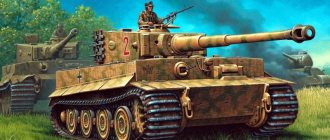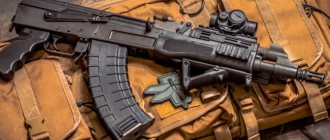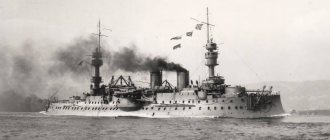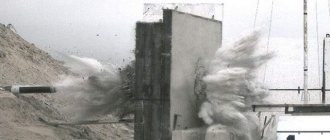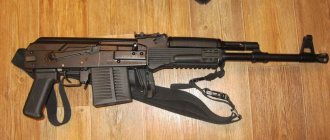When the masks are torn off
The failure of the “dragon”: how the flights of American spy planes were stopped in the USSR
This was not the first, but the last U-2 flight over the territory of the Soviet Union
The NATO bloc, which initially united 12 countries with obvious US hegemony, was founded on April 4, 1949. The Soviet Union was in no hurry to create a military alliance in response. It was believed that the party vertical, to which the leaders of the countries of the Soviet bloc, and therefore their armies, were subordinate, was quite sufficient. And in Poland and the GDR they hoped for more compelling reasons for joint military operations in the event of the arrival of the X-hour.
On the propaganda field, Moscow sometimes responded in the most unexpected ways. In March 1954, the Soviet Union even applied to join NATO. “The North Atlantic Treaty Organization would cease to be a closed military grouping of states and would be open to the accession of other European countries, which, along with the creation of an effective system of collective security in Europe, would be of utmost importance for strengthening universal peace,” the document said.
The proposal was rejected on the grounds that Soviet membership would be contrary to the democratic and defensive goals of the alliance. In response, the Soviet Union began to accuse the West of aggressive plans. “The masks have been torn off” - this was the reaction of Moscow, which predictably remained in front of the closed doors of NATO.
Signing of the North Atlantic Treaty, Washington, 1949
Photo: TASS/ASSOCIATED PRESS
The meeting of the general secretaries of the communist parties and the military leadership of communist-oriented countries, held in Moscow under Joseph Stalin, in January 1951, is considered to be a harbinger of the military bloc of the “socialist countries”. It was there that the chief of staff of the Group of Soviet Forces in Germany, Army General Sergei Shtemenko, spoke about the need to create a military alliance of fraternal socialist countries - to directly confront NATO.
Priority No. 1: physicists and lyricists discussed the history of the USSR atomic project
At the opening in the House of Scientists named after. A.P. Alexandrov exhibition presents unique documents
By that time, the USSR had already adopted the humanitarian arsenal of the “struggle for peace.” But the more peaceful Moscow’s rhetoric was, the more fearful they were of the “Soviet threat” “on the other side.” There was even a popular joke: Stalin (in later versions - Khrushchev and Brezhnev) announces: “There will be no war. But there will be such a struggle for peace that no stone will be left unturned.” Both sides convinced the world of the enemy's aggressiveness.
Alliance location
Many people wonder where the headquarters is. It is located in Belgium, to be more precise, that is, in the northeastern part of the city of Brussels, namely on the Boulevard Leopold III.
There are delegations of participating states, liaison offices, as well as diplomatic missions.
As for the secretariat and the International Military Headquarters, they are located in the same city and assist the missions in their work.
NATO bloc, goals of creation
History of the creation of NATO
German threat
Of course, Shtemenko was not the only “hawk” who advocated the creation of a common military “fist” of socialist countries. The authority of the Soviet army at that time was extremely high. The peoples who suffered from Nazism knew well who and how broke its back. Moreover, recent underground fighters, anti-fascists who owed their salvation to Moscow, were in power in the socialist countries. Many wanted to join this force. Both politicians and generals of the states of Eastern Europe hoped both for Soviet weapons and for closer cooperation between the armies. They couldn't imagine a better academy for themselves.
The initiators of the military alliance were primarily representatives of Poland, Czechoslovakia and the GDR. They had reason to fear the “threat from Bonn.” The US did not stick to its original plan to leave West Germany demilitarized. In 1955, Germany became a member of NATO. This step caused outrage in the Soviet camp. Caricatures of the “Bonn puppets” were published daily in all Soviet newspapers.
Infantry of the GDR and tanks of Czechoslovakia and the GDR. Joint exercises of the joint armed forces of the states participating in the Warsaw Pact “Vltava-66”, 1966
Photo: RIA Novosti/V. Gzhelsky
Germany's immediate neighbors were still afraid of the “new Hitler.” And in the GDR, not without reason, they believed that the Federal Republic of Germany, with the support of NATO, could sooner or later absorb East Germany. Slogans about a “united Germany” were very popular in Bonn. Romania and Albania were concerned about a similar situation in Italy. It, too, was gradually armed by NATO.
“Let them show something”: what Khrushchev and Nixon argued about in the kitchen
How the American exhibition shook the confidence of the Soviet people in the victory of communism
After Stalin's death, the USSR somewhat moderated its offensive impulse on all fronts - both military and ideological. The war in Korea has subsided. Since mid-1953, our former allies in the anti-Hitler coalition, the British and Americans, have been much more aggressive. To those of them who have an exaggerated attitude towards the “role of the individual in history,” it seemed that after Stalin’s death the Soviet Union could, if not “multiply by zero,” then be noticeably pushed aside in international politics. But neither Khrushchev nor his colleagues on the presidium intended to capitulate.
Peacefulness involuntarily
The Warsaw Pact was created 6 years after the emergence of NATO. After the end of World War II, the USSR was not at all as eager to export the revolution as our “Western partners” tried to imagine. It is a popular fact that in the post-war years, the communists of France (then the most popular party in the country) were preparing to raise a general rebellion and turned to Stalin with a request to support them in the event of intervention by the United States and Great Britain. To which Stalin, the supreme commander of the most powerful army in the universe at that time, responded with a categorical refusal. The reason for such peacefulness of the victors of Nazi Germany was mainly due to the enormous losses suffered by the Soviet and, above all, the Russian people. Stalin understood that the USSR most likely would not be able to withstand another large-scale (and involving nuclear weapons) battle with the West. It is no coincidence that the thesis became so widespread among our people for half a century: as long as there is no abuse.
Warsaw dinner
The Conference of European States to Ensure Peace and Security in Europe opened in Warsaw in May 1955. The main details of the Treaty had already been worked out by that time. The socialist countries of Eastern Europe signed the Treaty of Friendship, Cooperation and Mutual Assistance. Essentially, it is a military alliance, most often referred to as the Organization (as opposed to the “enemy” alliance) of the Warsaw Pact (abbreviated as Warsaw Pact).
Albania was the first to sign the Treaty, in alphabetical order. Then - Bulgaria, Hungary, East Germany, Poland, Romania, USSR and Czechoslovakia. Everything was ready for dinner. The text of the Treaty, as well as the military doctrine adopted several years later, noted that the Department of Internal Affairs was of a purely defensive nature. But the defensive nature of the doctrine did not mean passivity. Combat planning allowed for the possibility of a pre-emptive strike against groups of troops of a potential enemy “prepared to attack.”
Chairman of the Council of Ministers of the USSR Nikolai Bulganin (center), in the presence of members of the Soviet delegation and delegations of other countries, signs the Treaty of Friendship, Cooperation and Mutual Assistance between Albania, Bulgaria, Hungary, East Germany, Poland, Romania, USSR, Czechoslovakia at the Warsaw meeting, May 14 1955
Photo: RIA Novosti
Flight of the “corn farmer”: what Nikita Khrushchev gave to the country and the world
Exactly 125 years ago, one of the most controversial rulers of a great country was born
It was not without reason that Khrushchev and his comrades chose Warsaw for such an important meeting and - without exaggeration - a historical act. Firstly, there was no need to once again emphasize the hegemony of the USSR. Secondly, Warsaw was located closer to other friendly capitals - Berlin, Budapest, Prague... Thirdly, the Poles suffered more than other peoples of Eastern Europe from the Germans and needed security guarantees... And the parties to the Treaty, of course, pledged to help any of the countries by all means ATS in the event of military aggression.
Reasons for creation
Based on what was written above, we can identify the main reasons and factors that led to the creation of the Warsaw Pact:
Countries that were part of the Warsaw Pact:
- USSR
- GDR (German Democratic Republic)
- Czechoslovakia
- Hungary
- Romania
- Bulgaria
- Poland
On guard of peace and socialism
Soviet Marshal Ivan Konev became the Commander-in-Chief of the United Armed Forces of the countries participating in the Warsaw Pact. The headquarters was headed by Army General Alexei Antonov, a member of the Supreme Commander-in-Chief Headquarters during the war. The appointment of Konev, one of the Marshals of the Victory, made a strong impression on Washington. American military historian Colonel Michael Lee Lanning wrote in his book “One Hundred Great Commanders” that Konev’s role at the head of the armed forces of the Warsaw Pact was much more important than the role of Georgy Zhukov as Minister of Defense of the USSR.
Konev and Antonov, who led the friendly armies for an entire five-year period, really succeeded in a lot. They turned the Department of Internal Affairs into an effective military force. Suffice it to recall the Unified Air Defense System, which was centrally controlled and united all air defense forces.
Ivan Konev
Photo: RIA Novosti/Yuri Abramochkin
“Nikita Sergeevich Khrushchev is Russian in all generations”
Rada Adzhubey - about father, family and fate
Then, in 1955, the situation became clear to the West: Germany, France, and Great Britain were hostages of a fragile peace between two superpowers - the USSR and the USA. After the Warsaw Pact, the bipolar world, which had already become a de facto reality, became so de jure. In many ways, this helped the Soviet Union improve relations with Paris and Bonn, which in the 1970s resulted in the “era of detente.”
What does Cold War mean?
The Cold War was a global geopolitical confrontation between the USSR and its allies, on the one hand, and the United States and its allies, on the other, which lasted from the mid-1940s to the early 1990s.
Interesting materials:
What is Ivan Andreevich Krylov famous for? What is 1 degree Celsius equal to in Fahrenheit? What is 1 tenge equal to? What is the volume of the pyramid? What is the radius of the circle? What is the length of the difference of the segments? What is the kinetic energy of the body? What is the rate constant of a chemical reaction? What is the physical meaning of this quantity? What is the median drawn to the hypotenuse? What is the molecular weight of carbon dioxide?
Confrontation of systems
American military doctrine has never been even outwardly peaceful, allowing for the use of a pre-emptive nuclear strike. But fear of retaliation remained the main deterrent. And the second brake on American expansion was the Warsaw Pact Organization.
In some ways, the Department of Internal Affairs resembled the Holy Alliance, organized by the monarchs who defeated Napoleon. Then Russia, acting throughout Eastern Europe, suppressed attempts at revolutionary unrest. For the “friendly armies,” the most severe tests were also associated with the desire of the political authorities to maintain the existing state of affairs, suppressing counter-revolution. This was the case during the most famous military operations of the ATS - in 1956 in Hungary and in 1968 in Czechoslovakia.
But political responsibility, as we know, does not lie with the military command. The USSR, like the Russian Empire during the years of the Holy Alliance, was called by its enemies the gendarme of Europe.
Deployment of Internal Affairs Troops into Prague, 1968
Photo: RIA Novosti/Yuri Abramochkin
At the same time, in the USSR the issues of expanding the influence of the Internal Affairs Directorate were treated with a sense of proportion. Albania left the organization in 1968. In different years it would be possible to transform the organization into an intercontinental one. And the PRC (for the time being), and Vietnam, and Cuba, and Nicaragua, and a number of other states showed a desire to join the Treaty. But the Organization remained purely European.
The Treaty That Never Was: The Fate and Lessons of the SALT II Agreement
Why events 40 years ago are so important right now
In the same year, 1968, the special status of Romania was revealed: this country did not obey the decision of the majority and did not take part in Operation Danube. And yet, capricious Bucharest remained in the police department. The Romanian communists were content with the role of enfant terrible of the socialist camp.
What does the NATO flag look like?
Today the NATO flag looks like a blue rectangle with a blue and white emblem.
The emblem itself looks like a quadrangular star inserted into a white circle, in the form of a compass (wind rose), from the tops of which identical white stripes radiate. The angles of the star point to the four cardinal directions, and the compass itself is a symbol of the correct movement on the path to peace. The wind rose symbolically represents the countries of the alliance, which are located in different directions of the world, on both sides of the Atlantic. The white circle around the compass is a symbol of unity and cooperation of the member countries of the commonwealth, and the blue background is the color of the Atlantic Ocean.



